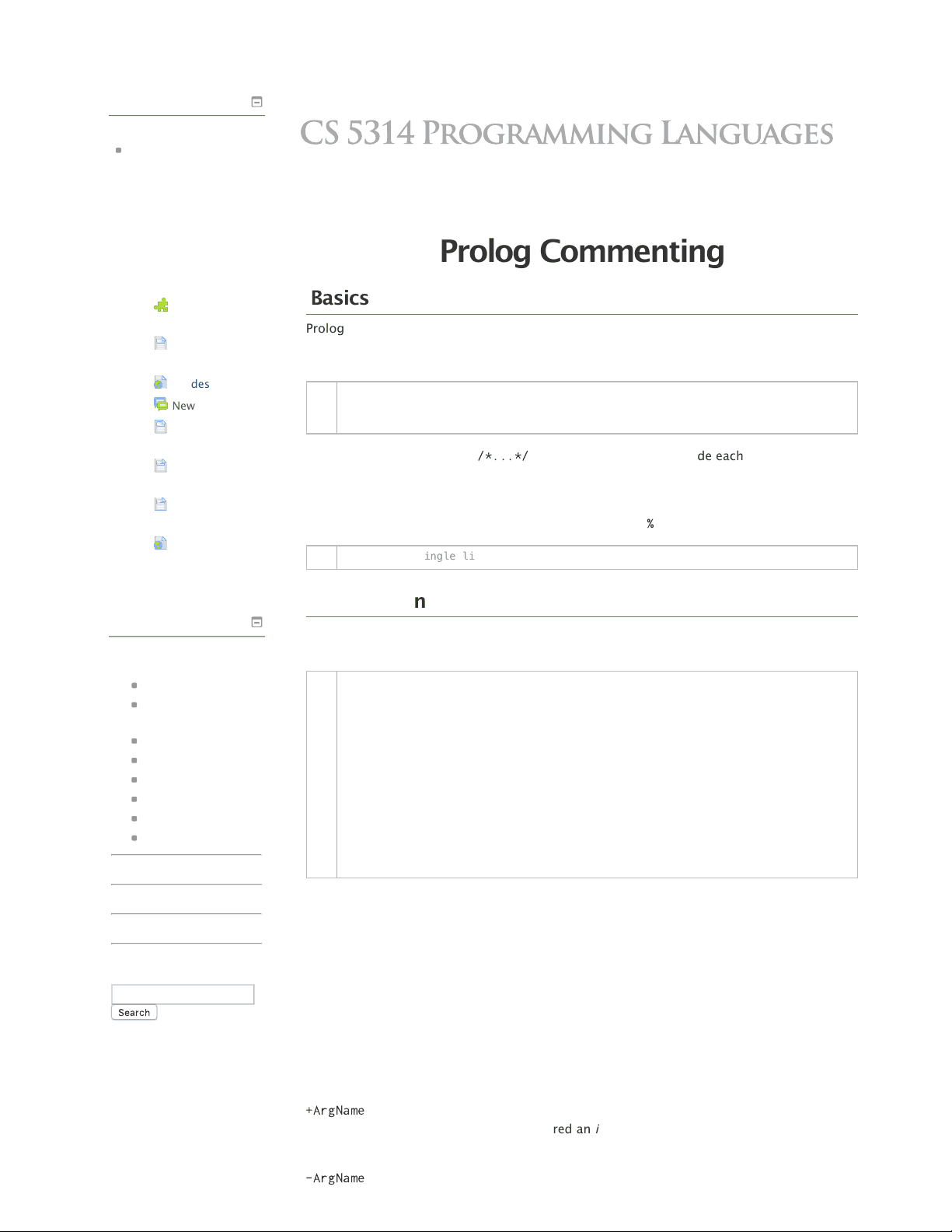




Study with the several resources on Docsity

Earn points by helping other students or get them with a premium plan


Prepare for your exams
Study with the several resources on Docsity

Earn points to download
Earn points by helping other students or get them with a premium plan
Community
Ask the community for help and clear up your study doubts
Discover the best universities in your country according to Docsity users
Free resources
Download our free guides on studying techniques, anxiety management strategies, and thesis advice from Docsity tutors
Prolog Commenting. Basics. Prolog supports both multi‑line and single‑line comments. Multi‑line comments use C‑style comment delimiters:.
Typology: Study notes
1 / 4

This page cannot be seen from the preview
Don't miss anything!



You are logged in as STEPHEN EDWARDS ( LOGOUT )
/* This is a multiline comment. */
% This is a single line comment.
NAVIGATION
Home
My profile
Current course
CS 5314 F
Participants
Reports
General
My courses
SETTINGS
Page module administration
Course administration
Switch role to...
My profile settings
Site administration
Search
My home
Piazza course discussion area
CS 5314 Syllabus
Grades
News forum
Prolog resources
Prolog commenting
Program grading criteria
Login to Web‑ CAT
Edit settings Locally assigned roles Permissions Check permissions Filters Logs Backup Restore
Adding Test Cases